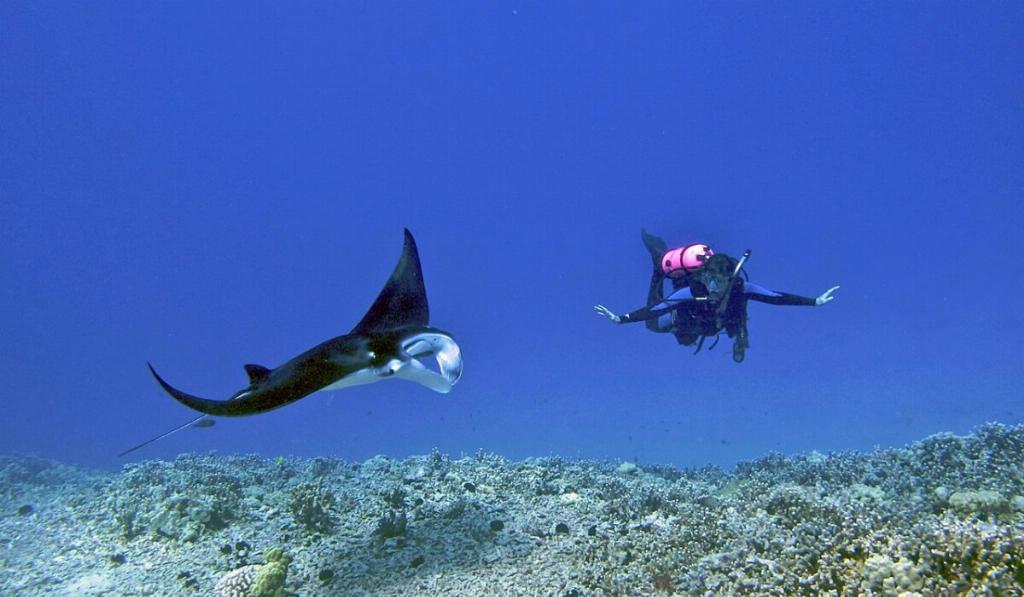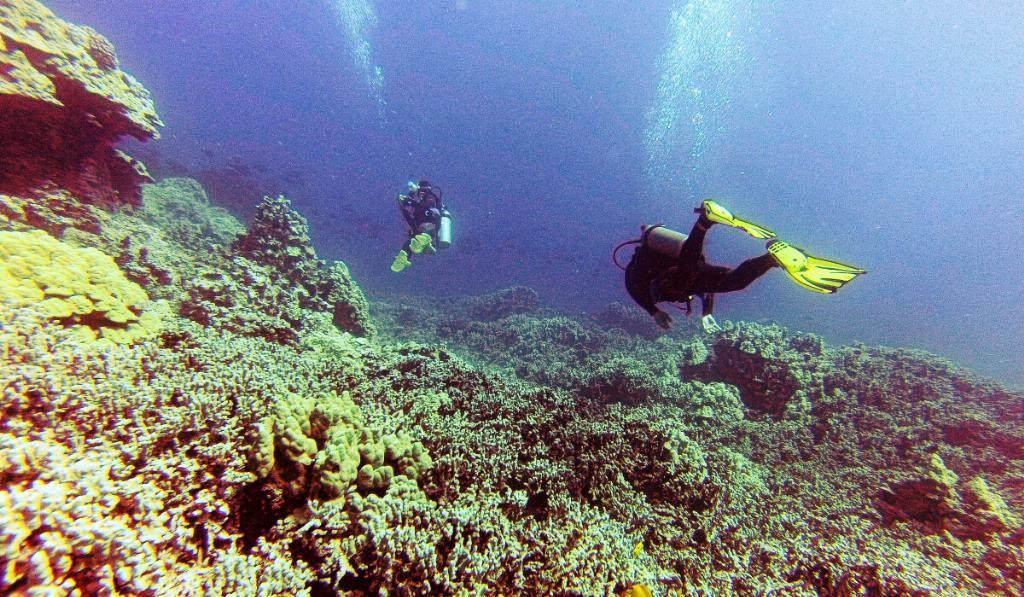Buceo en Hawaii
Información general
Información de buceo
 Crédito:
commons.wikimedia.org
Crédito:
commons.wikimedia.org
 Crédito:
www.flickr.com
Crédito:
www.flickr.com
Cuándo visitarnos
Some dive sites may be closed in the winter months (December through March).
Condiciones de inmersión
Hawaiian waters average 77° F/25° C in the winter and 82° F/28° C in the summer.
Currents are generally predictable; local dive guides should be able to give you all the information about the currents you can expect at each dive site.
The visibility on the Big Island is typically great, exceeding 82 feet/25 meters.
Tipos de inmersión
Destacados
Lava Tubes
A lava tube is a cave that can form after the lava flow has slowed down and cooled, creating a crust around itself. The underwater lava tubes are nothing short of breathtaking, creating rare spectacular seascapes. Around the Big Island, divers can see tunnels, caverns, and arches created by lava.
Coral Reefs
The Hawaii archipelago has over 85 percent of the coral reefs in the U.S., most of which are fringing reefs. Although the majority of the coral reefs are found around the Northwestern Hawaiian Islands, divers can also find beautiful ecosystems of reefs around the inhabited islands as well. The Kealakekua Bay on the Big Island is one of the best places to admire the Hawaiian reef.
Marine Life
Up to 25 percent of the species of animals living in the water surrounding the Hawaiian Islands are endemic, meaning they can only be found here. The diverse marine life is what drives so thousands and thousands of scuba divers and snorkelers here every year. Some of the species of local marine life you have high chances of seeing include the Hawaiian green sea turtles, humpback whales, spinner dolphins, monk seals, manta rays, and many species of colorful reef fish.
Escriba el nombre del centro de buceo

Hawaii

Hawaii
¿Le apasiona el buceo?
Explora un completo mapa de inmersiones, realiza un seguimiento de tus inmersiones, carga tus registros de inmersión, conéctate con tus compañeros de inmersión o con otros buceadores de todo el mundo, y mucho más.